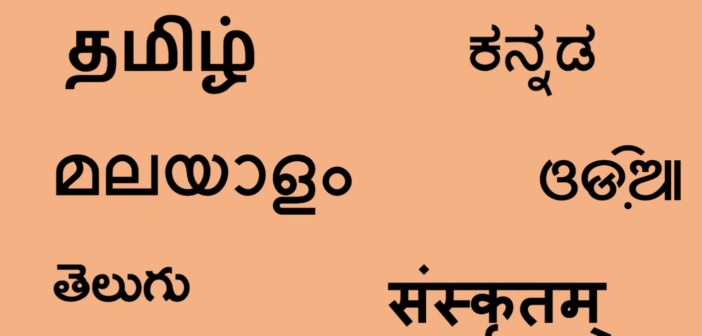Recently on 04 October 2024, the Union Cabinet conferred the status of Classical Language to Marathi, Pali, Prakrit, Assamese, and Bengali. With this recognition, India now boasts a total of eleven classical languages. Data indicates that the government provided over Rs. 130 crores for the development of these classical languages since 2014-15.
Recently on 04 October 2024, the Union Cabinet, chaired by Prime Minister Narendra Modi, conferred the status of Classical Language to Marathi, Pali, Prakrit, Assamese, and Bengali. With this recognition, India now boasts a total of eleven classical languages. This decision is significant as it highlights the rich literary and cultural heritage associated with these languages and reinforces India’s commitment to preserving its linguistic diversity. Classical languages play a crucial role in connecting modern society to its historical roots, offering valuable insights into ancient philosophies, literature, and traditions.
In this article, we explore the criteria for conferring classical language status and the government’s efforts to promote these languages.
The data on funds provided for various classical languages for the last 10 years is available on Dataful.
In 2004, the Government of India introduced a new category called Classical Languages, establishing specific criteria that a language must meet to achieve this status. This designation honours languages that are crucial to India’s historical past and cultural heritage. For centuries, these languages have played a key role in preserving and disseminating the country’s ancient knowledge, philosophies, and values. By granting classical status, the government acknowledges their enduring legacy and rich literary traditions while emphasizing their vital contribution to the nation’s cultural identity.
What are the criteria for designating languages as classical?
The designation of languages as Classical Languages in India has evolved significantly since its inception. In 2004, when the Government of India established the category of Classical Languages, the initial criteria included:
- High antiquity of early texts or recorded history spanning over a thousand years.
- A body of ancient literature regarded as a valuable heritage by generations of speakers.
- An original literary tradition that is not derived from another language community.

Later, in 2005, the criteria were refined based on the recommendations of Linguistic Experts Committees (LEC) under the Sahitya Akademi to include a more specific timeline for historical significance, requiring a recorded history of 1500 to 2000 years instead of just over a thousand years. Additionally, the updated criteria emphasized the relationship between classical languages and their modern forms, highlighting the potential discontinuity between the classical language and its later derivatives.

In 2024, nearly two decades after the previous modifications, the criteria were updated again by LEC based on the Ministry of Home Affairs advice to revise the same and make it stringent. The revisions maintained the requirement for a recorded history of 1500 to 2000 years and a significant body of ancient literature. However, the new criteria also included the inclusion of knowledge texts, particularly prose, alongside poetry, and emphasized the importance of epigraphical and inscriptional evidence. Additionally, the criteria reiterated the possibility of distinction or discontinuity between classical languages and their modern forms.

What is the process of granting classical language status?
The process of granting the status involves several key steps and multiple stakeholders, including linguistic experts, government ministries, and the Union Cabinet.
- Proposal Submission: A proposal is typically submitted by a state government requesting Classical Language status for a specific language.
- LEC Evaluation: The Linguistics Experts Committee assesses whether the language meets the established criteria for classical status.
- Final Decision: The Union Cabinet, chaired by the Prime Minister, makes the final decision to confer the status.
How many languages have been conferred with the status?
As of 03 October 2024, a total of 11 languages have been conferred Classical Language status. Tamil was the first language to receive this distinction in 2004. In 2005, Sanskrit was granted the status while modifying the criteria for eligibility. Subsequently, in 2008, both Telugu and Kannada were awarded Classical Language status. In 2013, Malayalam joined the ranks, marking the recognition of all five official languages of the southern Indian states.
Odia was conferred the status in 2014. After a decade-long gap, five languages were granted this status together in 2024: Marathi, Pali, Prakrit, Assamese, and Bengali, based on proposals from the states of Maharashtra, Bihar, Assam, and West Bengal. Nonetheless, the primary states involved are Maharashtra (Marathi), Bihar, Uttar Pradesh and Madhya Pradesh (Pali and Prakrit), West Bengal (Bengali), and Assam (Assamese).

What are the benefits of being conferred with classical language status?
This classical language acknowledgement not only elevates the importance of these languages but also paves the way for greater efforts in their promotion and preservation. The Ministry of Education has rolled out several initiatives to advance the study and preservation of Classical Languages. In 2020, three Central Universities were established to promote Sanskrit. Additionally, the Central Institute of Classical Tamil was created to facilitate the translation of ancient Tamil texts, promote research, and offer courses for university students and language scholars. To further enhance the study of Classical Languages, Centres for Excellence were established for Kannada, Telugu, Malayalam, and Odia under the Central Institute of Indian Languages in Mysuru.
Furthermore, national and international awards have been established to recognize and encourage achievements in the field of Classical Languages. An Award of Certificate of Honour is granted to a non-resident Indian or a person of non-Indian origin for outstanding contributions in Sanskrit. Additionally, two international awards (one each for individuals of Indian and non-Indian origin) are offered in Classical Oriya, Classical Kannada, Classical Telugu, and Classical Malayalam. Selected scholars over 60 years of age receive the Certificate of Honour, a shawl, and a one-time monetary grant, celebrating their significant contributions to the preservation and promotion of these classical languages, along with Arabic and Persian.
Other benefits extended to Classical Languages by the Ministry of Education include National Awards for Classical Languages, university chairs, and dedicated centres for their promotion.
What is the quantum of funds allocated for development of classical languages?
Funds are allocated for these classical languages by the Government of India. The amount allocated each year by language has been given in the chart below.
The funds allocated for Tamil, the first language given the status, is the highest with more than Rs. 100 crores. About 50% of the fund was allocated between 2020-21 and 2023-24 only. Meanwhile, the allocation for Telugu and Kannada was between Rs.11-12 crores. The allocation for Malayalam and Odia began only in 2020-21.
For Sanskrit, funds are provided to the universities for teaching and research in the Sanskrit Language leading to the award of degrees, diplomas, and certificates to students and no separate funds are provided for undertaking any work related to the classical aspect of Sanskrit.
How classical languages are different from other language recognitions of GoI?
While classical languages are recognized for their rich historical and literary heritage, with ancient texts and distinct forms, the scheduled languages are officially recognized in the Eighth Schedule of the Constitution. The 22 scheduled languages are designated for use in government and education. Further, official languages are used for governmental functions and legal documentation, with Hindi and English serving as the official languages of the Government of India. The primary difference lies in their purposes: classical languages focus on cultural significance while scheduled and official languages are centred around governance and administration. It should be noted that no language in India has been conferred the status of the national language.
What are some measures taken to promote other languages in the country?
Recognizing the importance of preserving and promoting languages, particularly those that are endangered or have fewer speakers, several initiatives and policies have been implemented by the Government of India. These include:
- Scheme for Protection and Preservation of Endangered Languages (SPPEL): Under this scheme, the Central Institute of Indian Languages (CIIL), Mysore, works on the protection, preservation, and documentation of Indian languages spoken by less than 10,000 people. About 117 languages have been listed under it.
- CIIL works on the promotion of all Indian languages, including Scheduled, Non-Scheduled, and Classical languages. In addition to SPPEL, CIIL runs various schemes like the National Translation Mission, Linguistic Data Consortium of Indian Languages, Bharatavani, etc.
- Promotion of Tribal Languages: The Ministry of Tribal Affairs provides grants to State Tribal Research Institutes for the promotion of tribal languages and the development of bilingual primers. Financial assistance is also provided for research study programs, documentation of tribal languages, and the organization of literary festivals.
- National Education Policy (NEP) 2020: The policy emphasizes the promotion of all Indian languages, including regional languages. It advocates for the medium of instruction to be in the home language/mother tongue/local language up to at least class 5 and preferably up to class 8. The policy also encourages the use of bilingual approaches in teaching and the availability of high-quality textbooks in the home language/mother tongue.
- Bhasha Sangam Program by NCERT, Mission Digital India Bhashini by MeITY, and DIKSHA Portal are some technological initiatives to promote languages in the country.
Conferring the Classical Language status not only safeguards these languages for future generations but also acknowledges their historical and literary significance. This recognition reinforces their role in shaping India’s cultural identity and promotes efforts in preservation, research, and revitalization.



